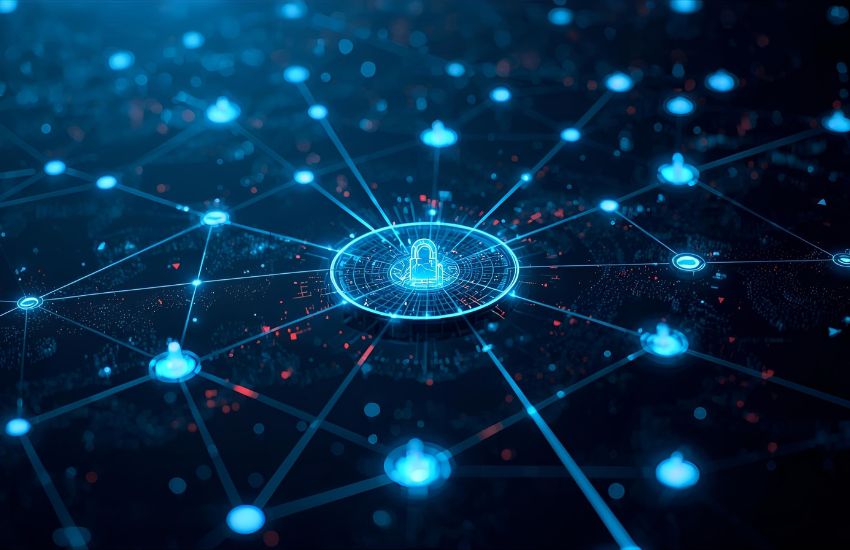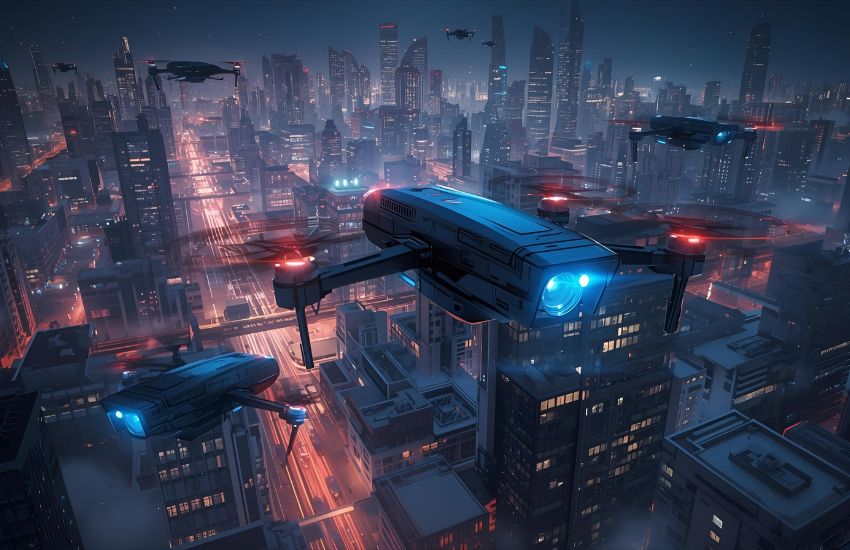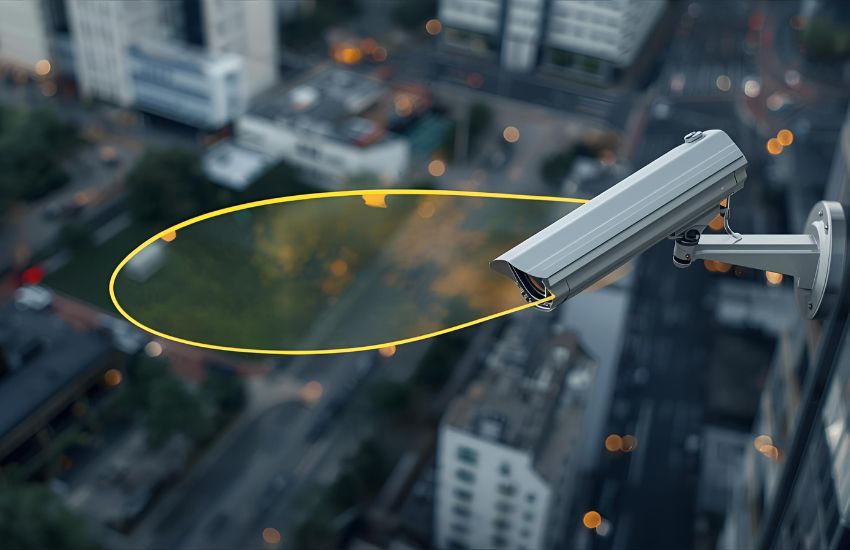What if your surveillance system could not only see but understand what it’s looking at? The integration of object detection into security technology has transformed passive video feeds into intelligent, responsive systems capable of identifying and analyzing threats in real time. With advances in machine learning, architecture, and detection models such as SSD and R-CNN, you’re now able to enhance security with unprecedented precision and efficiency.
Enhancing surveillance with object detection task allows security systems to automatically identify and track objects of interest in real-time. This advanced capability improves threat detection, reduces human error, and boosts overall efficiency. By leveraging AI and machine learning, object detection strengthens monitoring accuracy and provides actionable insights for safer environments across various sectors.
In this blog, you’ll explore how object detection empowers surveillance systems, how R-CNN and other detection models compare, and why understanding their architecture is vital to making the right choice for your security needs. From training models with precise datasets to implementing robust object detection strategies, each section will guide you toward smarter, safer monitoring solutions.
Understanding Object Detection and Its Role in Modern Surveillance

What Is Object Detection?
Object detection is a computer vision technique used to identify and locate objects within an image or video. Unlike simple classification, which assigns a single label to an image, object detection allows you to detect multiple objects, determine their location, and label them according to their object class. This capability makes it highly effective for real-time surveillance, where tracking and analyzing different activities is essential.
Core Components of Object Detection
At the heart of any object detection system lies a robust architecture designed to recognize patterns at scale. Most modern solutions use convolutional neural networks (CNNs)—a deep learning approach ideal for interpreting visual data. These models are trained using thousands of labeled images, allowing them to compare the input image to known patterns and generate a prediction.
Each object is typically enclosed in a bounding box, which highlights its exact location. The model also calculates confidence scores to assess the accuracy of identifying each object within the frame. Techniques such as segmentation further enhance precision by defining the shape and pixel boundaries of objects, rather than just using rectangular outlines.
Evolution of Detection Architectures
Several detection architectures have emerged over time to increase performance and efficiency. YOLO (You Only Look Once), developed by Joseph Redmon, is known for its speed and is widely used in real-time surveillance applications. Unlike two-stage models such as Fast R-CNN, YOLO processes the entire image in a single pass, delivering fast and accurate results.
These architectures differ not only in speed but also in how they handle features like segmentation, bounding boxes, and object classification. Some use grid-based detection, while others apply region proposals and anchor boxes to refine the location of an object more accurately.
Practical Impact on Surveillance
In a surveillance context, object detection allows you to predict and respond to potential threats by tracking people, vehicles, or other classes of objects as they move across camera views. Whether you’re monitoring a crowded public space or securing private property, the ability to detect multiple objects with high precision transforms passive footage into actionable insight.
In the next section, you’ll explore how various detection models such as YOLO, SSD, and Fast R-CNN compare in performance, and how choosing the right architecture can elevate your entire security system.
See more about…Video Surveillance from Android & iPhone Mobile App
Comparing Benchmark Detection Models: YOLOv3, SSD, R-CNN, and Mask R-CNN

Choosing the Right Model for the Object Detection Task
When you’re working on an object detection task, selecting the right detection model is critical to achieving optimal accuracy and performance. Different models are suited to different use cases, depending on factors like speed, complexity, and precision. Whether you’re monitoring a busy retail environment or tracking vehicles in real-time, understanding how benchmark models like YOLOv3, SSD, R-CNN, and Mask R-CNN perform will guide you toward the most efficient solution.
YOLOv3: Speed and Simplicity for Real-Time Detection
YOLOv3 (You Only Look Once, version 3) is designed for high-speed object detection. It processes the entire image in a single pass—a single shot approach—making it suitable for real-time surveillance and video processing applications. If your system needs to rapidly detect objects within images or video feeds without sacrificing too much accuracy, YOLOv3 offers an excellent balance.
YOLOv3 is especially effective when your workflow involves processing a large volume of input quickly, such as in image retrieval or autonomous surveillance systems.
SSD: Balance of Speed and Accuracy
The Single Shot Detector (SSD) model also uses a single shot detection technique. Unlike YOLOv3, SSD places greater emphasis on precision at different scales within an image. It’s ideal when you need to detect specific object types across varying sizes and resolutions. SSD performs well with the COCO dataset and is commonly used for detecting objects of interest in urban or industrial environments.
R-CNN and Its Variants: Region-Based Accuracy
The R-CNN family uses a two-stage learning approach. First, it identifies a region of interest (ROI) where an object might be located. Then, it classifies the object and refines its boundaries. This makes R-CNN highly accurate, but slower compared to single-shot models.
For faster processing, Fast R-CNN and Faster R-CNN improve the architecture by optimizing how ROIs are proposed and evaluated. These models are valuable when precision is a top priority, such as in legal or forensic video analysis.
Mask R-CNN: Adding Instance Segmentation
Mask R-CNN extends Faster R-CNN by incorporating instance segmentation, allowing you not only to detect objects but also to understand their exact shapes and outlines. This is crucial in applications where object boundaries matter, such as medical imaging or advanced threat detection.
If your goal involves detecting objects in an image with pixel-level detail, Mask R-CNN is a powerful option, especially when paired with a robust benchmark dataset.
Advancing Surveillance with Learning for Object Detection
Each of these models represents a unique learning for object detection approach, optimized for different surveillance goals. By carefully selecting the right model based on your domain, data availability, and performance requirements, you empower your surveillance system to become smarter, faster, and more reliable.
See more about…Search Surveillance Video by Event on Viewtron DVRs
How Machine Learning for Object Detection Improves Accuracy Through Architecture and Datasets

When precision is non-negotiable in your surveillance system, machine learning for object detection offers the sophistication and adaptability needed to meet evolving security demands. At its core, object detection is a computer vision technique that benefits significantly from advanced architectures and high-quality datasets. The accuracy of your system depends not only on the detection algorithm but also on how well it learns from data and adapts to various conditions.
Modern deep learning models such as Mask R-CNN have revolutionized how machines interpret visual information. Unlike traditional detection techniques, Mask R-CNN can perform image segmentation alongside object recognition, outlining the exact shape of each object instead of simply drawing bounding boxes. This level of precision is critical for applications like video surveillance, where identifying fine details and object boundaries can be the difference between a reliable alert and a false one.
Behind this level of performance lies an intricate neural network module, composed of millions of parameters that need to be optimized during training. The process of training the network requires large-scale datasets, complete with ground-truth annotations to guide learning. These datasets enable the model to distinguish between complex semantic segmentation tasks and simpler image classification.
Performance isn’t just about accuracy—it’s also about responsiveness. Models like Mask R-CNN, while highly accurate, can be computationally demanding. Running them in real time may introduce latency, especially on resource-limited CPU systems. To overcome this, leveraging GPUs, particularly those powered by NVIDIA, allows you to accelerate model inference and reduce response time in mission-critical scenarios. For large-scale deployments or environments requiring continuous monitoring, using dedicated GPU hardware ensures efficiency and consistency.
The strength of these systems is further enhanced when combined with technologies like sensor fusion in robotics, enabling smarter, context-aware decision-making. Unlike outdated methods such as the sliding window approach, today’s models learn to generalize across varied inputs, adjusting to different lighting conditions, angles, and motion patterns.
Ultimately, by combining robust datasets, advanced architectures like Mask R-CNN, and accelerated computing resources, you can significantly elevate the performance of your surveillance system. It’s a scalable, intelligent approach to safety—one that empowers you to detect, understand, and act with confidence.
See more about…360 Degree Surveillance Camera
Conclusion
In the rapidly advancing field of modern surveillance, precision and responsiveness are no longer optional—they are essential. Through advanced architectures and powerful datasets, today’s systems can achieve highly accurate results using segmentation masks that define the exact shape and boundaries of detected objects. Models like Mask R-CNN make it possible to analyze scenes in detail, improving the reliability of alerts and the overall effectiveness of monitoring operations.
However, it’s important to understand that every solution involves a tradeoff. While some models offer high speed, others provide greater accuracy through techniques like segmentation masks, depending on the nature of the environment and the resources available. Choosing the right approach means aligning your priorities—whether that’s processing speed, detection accuracy, or scalability.
In some cases, lightweight models may offer basic object detection without detailed segmentation, which can be suitable for less complex scenarios. However, when every frame counts and identifying whether an object is present or not matters deeply, more robust solutions used for object detection are the key to proactive, intelligent surveillance.
See more about…4K Video Surveillance Footage Download from Viewtron Mobile App
Frequently Asked Questions (Enhancing Surveillance with Object Detection Task)
What is object detection used in surveillance systems for?
Object detection in surveillance systems is used to automatically identify and track objects such as people, vehicles, or packages within video footage. It enhances security by detecting suspicious activities, improving situational awareness, and triggering alerts in real time. This technology helps automate monitoring, reduce human error, and ensure faster response to potential threats.
What is the object detection task?
The object detection task involves identifying and locating objects within an image or video. It combines image classification and localization by predicting object categories and drawing bounding boxes around them. This technology is widely used in areas like surveillance, autonomous driving, and robotics to analyze visual data and detect multiple objects simultaneously with high accuracy.
What is the purpose of using a camera as a search tool in object detection?
The purpose of using a camera as a search tool in object detection is to capture real-time images or video streams that help identify, locate, and track specific objects within a scene. The camera provides visual data to the detection system, enabling it to analyze objects’ shapes, colors, and movements for accurate recognition and automated responses.
What are the objectives of object detection?
The objectives of object detection are to identify and locate objects within an image or video accurately. It aims to classify each object and determine its position using bounding boxes. Object detection helps in real-time tracking, automation, surveillance, and image analysis, enabling systems to understand and interact with visual environments effectively.
